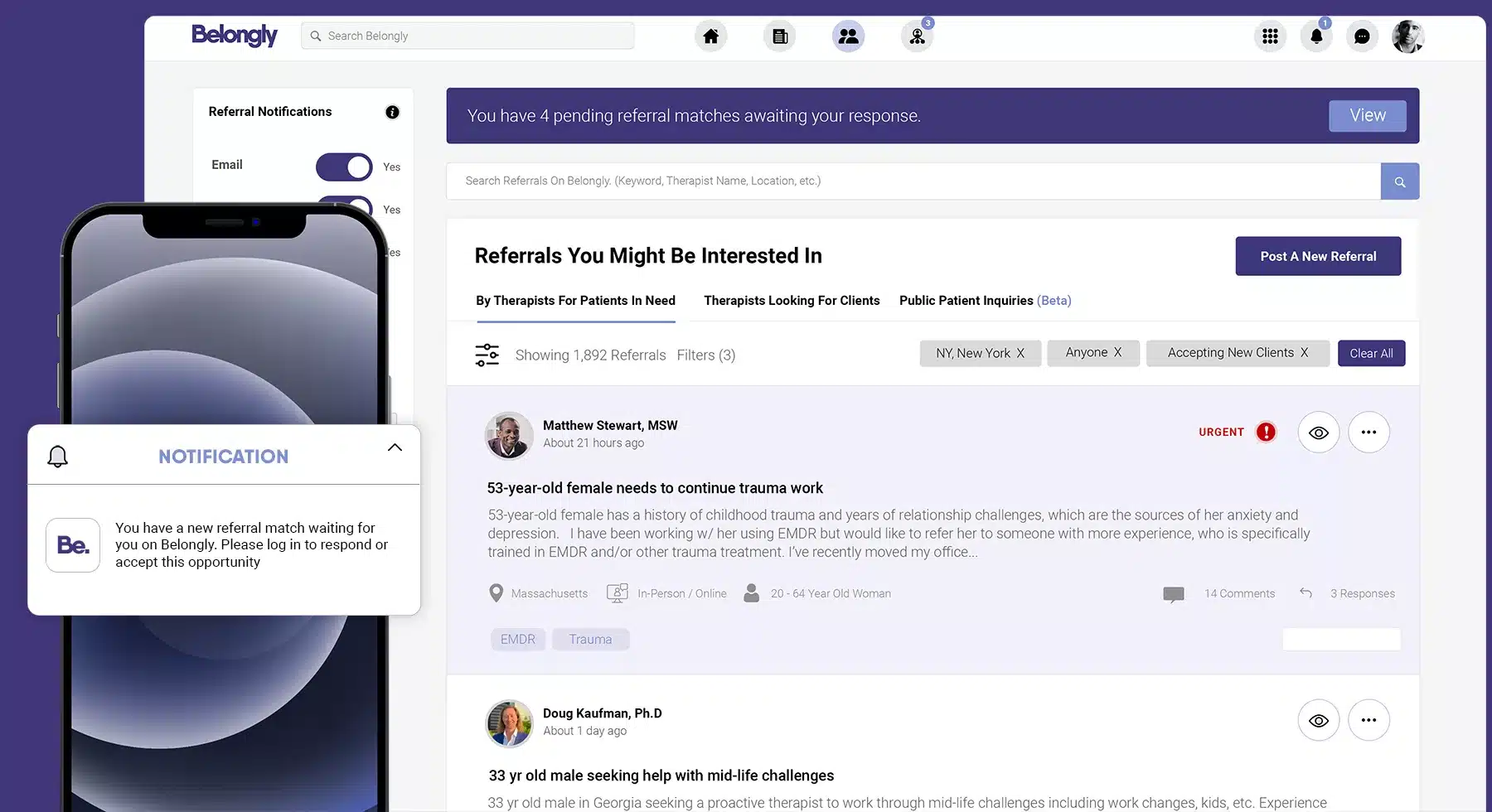The correlation between patient experience and clinical outcomes is well-documented in medical settings. Research has shown that when patients feel understood, listened to, and empathized with by their providers, they are more likely to follow treatment recommendations and enjoy better health after discharge.
Of course, this comes as no surprise to mental health providers, who have long understood the importance of the patient-provider relationship. But what about other aspects of the patient experience, like the logistics of booking initial consultations, appointment wait times, and expectations for treatment?
While there have been comparatively fewer studies on how these elements affect psychotherapy outcomes, the existing research points to a similar correlation between patient experience, treatment adherence, and long-term progress. For example, one study of patients in an inpatient setting found that their experiences of confidentiality, ease of access to care, and provider responsiveness significantly influenced whether they sought follow-up care.
Therapists are well-versed in the efficacy of treatment approaches, but often need more clarification about how other elements of the patient experience drive outcomes. After all, there were no classes in graduate school about scheduling logistics or acceptable response times! Here, to fill the gap, is our guide to creating a more patient-centric practice for improved patient satisfaction and better treatment outcomes.
Use auto-responders to acknowledge client inquiries, set response time expectations, and provide helpful resources
Reaching out to schedule an initial appointment is an act of courage for many patients. Timely responses communicate respect and understanding. Auto-responders allow you to reply to patient inquiries even when you are in back-to-back appointments. You can provide patients with general information about your practice, services, and availability and let them know when they can expect a more personalized response. Auto-responders can also direct patients to self-help resources like blog posts, podcasts, or webinars.
Prioritize initial consultations to ensure clients receive timely support
Waitlists are a frustrating and demoralizing experience for patients, especially those who are in crisis. By designating certain time slots for initial consultations, you can make sure to provide patients with the support they need, when they need it. Even if you aren’t able to see them on an ongoing basis, you can use the time for triage and treatment recommendations. You can then use Belongly’s referral service to match patients with appropriate providers.
Streamline the consultation booking process to reduce barriers to entry
The easier it is to book an appointment, the more likely patients are to do it. While picking up the phone and leaving a voicemail may not seem like a big deal, for patients experiencing anxiety about the therapy process, it may feel prohibitive. Consider adding a “Book Now” button to your website home page, with a link to your online calendar. This way, patients who are motivated to seek treatment can take immediate action.
Offer easy and flexible scheduling options
In addition to using an online calendar like Calendly, you can prioritize the patient experience by offering a variety of appointment times and locations. For example, some patients prefer to meet at the same time every week, while others have schedules that are more variable. Some patients prefer telehealth, while others like to meet in person. By offering a wide range of options, you can “meet patients where they are” literally as well as figuratively.
Use email communication to promote patient engagement
A 50-minute therapy hour is less than .5% of the week. Use email newsletters, blogs, and social media posts so your patients can stay engaged even when they are not in your office. You can also use email to solicit patient feedback and monitor progress. Research indicates that collecting feedback from patients, particularly in the early stages of treatment, significantly influences retention and treatment outcomes.
Involve patients in the treatment planning process
Another way to increase patient engagement is by involving them in the treatment planning process. Research shows that patient-provider collaboration increases retention, and clients who participate in goal-setting are more likely to feel satisfied with their treatment progress.
Use informed consent to set appropriate expectations
One of the top indicators of patient satisfaction is the extent to which they feel that their provider explained the treatment process. Make treatment expectations part of your informed consent process. Include things that you may think are obvious, such as your availability after hours for phone calls and text messages, the timeline in which patients can expect to receive a return phone call, and the possibility that patients might feel worse before feeling better.
Keep Reading
Want more? Here are some other blog posts you might be interested in.










